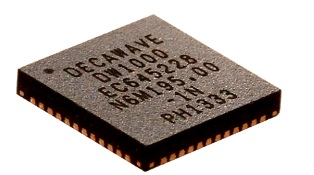- Home
- Symmetry Blog
- DecaWave ‘Performance of DW1000 Based Systems’ FAQs For Design Engineers Part 1
DecaWave ‘Performance of DW1000 Based Systems’ FAQs For Design Engineers Part 1
About Symmetry Electronics
Established in 1998, Symmetry Electronics, a Division of Braemac, is a global distributor of electronic components and systems. Combining premier components and comprehensive value-added services with an expert in-house engineering team, Symmetry supports engineers in the design, development, and deployment of a broad range of connected technologies.
Exponential Technology Group Member
Acquired by Berkshire Hathaway company TTI, Inc. in 2017, Symmetry Electronics is a proud Exponential Technology Group (XTG) member. A collection of specialty semiconductor distributors and engineering design firms, XTG stands alongside industry leaders TTI Inc., Mouser Electronics, and Sager Electronics. Together, we provide a united global supply chain solution with the shared mission of simplifying engineering, offering affordable technologies, and assisting engineers in accelerating time to market. For more information about XTG, visit www.xponentialgroup.com.
The DecaWave DW1000 IC provides a new approach to Real Time Location and Indoor Positioning Systems, Location Based Services, Wireless Sensor Networks and the Internet of Things by providing accurate location awareness and communication.
This series will share answers to some common DW1000 questions.
 DW1000 Single Chip UWB Wireless Transceiver
DW1000 Single Chip UWB Wireless Transceiver How many times per second do the Anchor and Tags send /measure distance?
In Decawave’s demonstration application the tags and anchors use Two-Way ranging protocol to exchange messages and calculate range/distance between them. To calculate a single range a minimum of 3 messages are needed (if tag needs to be told of the range result, then either this information can be sent via next Response message or an additional 4 th message can be used (e.g. ToF report)).
DW1000 supports various data rates and preamble combinations. Depending on the preamble length and data rate used, a single message can vary between 190 µs (6.81 Mbps, 27 bytes, 128 preamble) to 3.4 ms (110 kbps, 27 bytes, 1024 preamble). This means that time to calculate a single range can vary from couple of milliseconds to tens of milliseconds.
In TDoA systems the blink frame (with preamble length of 64-symbols) and 12 octets of message payload, is around 110 µs this means that RTLS system can support 1700 blinks per second for 1 device or 170 blinks per second for 10 devices etc.
For more information see the DW1000 IC user manual Chapter 9 Node density and air utilisation, available from http://www.decawave.com/support#term4
For additional DecaWave product information or technical support, contact Symmetry Electronics, an authorized distributor of industry leading wireless, audio/video and embedded chips, modules and dev/eval tools (877) 466-9722.
